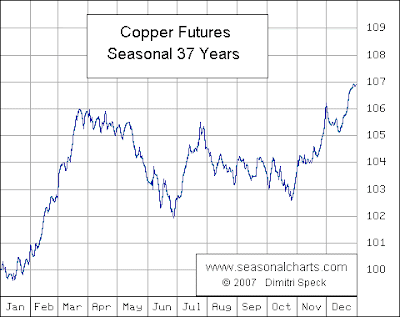Hello,
yes, that was for me a surprisingly good month for equity markets, which is, come to an end, I must admit. He was certainly unusual, mainly because he did not fit into the typical on Risk (vs. Risk-off), and reflation (vs. deflation) trade scheme. The stock markets rose, but the same applies also to the world "safe" government bonds. be seen most clearly in the U.S., where the yield on the 5-year Treasuries (green, in%, left scale) on Friday since after the GDP figures at their lowest March 2009 were, who were the 2-year one week before ever fallen to an all-time low. Stock markets and bond yields, which are related since 1998 clearly positive, here last month went in different directions. While the bond markets have been moved by the most negative macro numbers, it was a positive season, which drove the stock markets.

In Europe, the situation was similar. While the Bund futures contract lost by a weakening of PIIGS crisis and after a very strong IFO figures (the latter I think, however, see Chart 3 July at the bottom, IFO to ISM,
http://franzlischka.blogspot.com/2010 / 07/mein-ublicher-senf-zur-aktuellen.html ., Usually for a trailer of the U.S. figures) If you look at in the inflation swaps (euro area) is priced in inflation, one sees a similar picture:

Also in the bond market moves more to the Deflation rail. The break-even rate in the 10-year sector (blue, in%, right scale) has fallen to a level that was achieved even in the financial crisis for a few days.
Who now has right to the stock or the bond market? Both? That would mean a return to the Goldilocks scenario of the 90s (high, but not to strong growth with falling inflation and increasing company profits). I can not imagine the best of intentions. I would be multiplied by the Bond Markets. The stock market has benefited from the quarterly earnings season, the first looks back (again 2nd quarter), and secondly has now passed its peak. In the future, so that the economic figures are not only on the bond, but also to the equity markets are important. The fact that S & P 500 and Euro Stoxx 50 are now both times failed in their 200-day lines, the level was also at the same time the previous motion from the June high, is there to mention also negative. Well, let's see. On Monday's is the ISM numbers already exciting.
more than a glance the current value of the commodity markets. While the chart provides the most economically principal raw material, crude oil, currently completely boring from. But otherwise does a lot. As would be one gold, the opposite of almost all assets currently has (but in line with falling inflation expectations in the bond market) breached its upward trend since 2008 to bottom has

surprised me, however, the onset of the industrial metals, especially of copper on a near 3-month high. Not quite match the rather weak economic situation. Would interpret the time being but not too much into it. Copper is for any reason, in July, usually very strong:

The annual change in the copper price has thus also changed little. Moreover, the economy is lagging behind on occasion:

was watching the price of copper more times, but no big draw conclusions.
may be crucial is in the immediate future of the agricultural market. And since the less hyped in the media corner the cocoa market, where does in reality the last few weeks hardly anything. More important to the wheat market, exploding the moment after the catastrophic crop failures in Russia:

could well represent a significant development. Jim Rogers and Marc Faber have long been advised to purchase agricultural commodities, due to negative Roll-process yields is not a long-term investment. Could be, however, that many people now jump on the trade. This reminds me a little of the Spring 2008: An uncertain economic situation looks, too much cheap money, the non-cyclical returns, meets crop failures. Back then it was mostly rice and crop failures in Asia, this time just wheat and crop failures in Russia and Ukraine, but even before that in China. The outcome at the time: Exploding agricultural prices, especially rice and very serious unrest in many Asian countries. Do not know if it will be similar this time, but Jim Rogers and Co have been warning for more of a mismatch between supply and demand for food, and turn on rice, but this time it is (still) not affected by price increases.
Well, let's see. If at least one potential new flashpoint. I would guess that in the near future a lot of money will flow in agricultural commodity futures. If there is strong price increases, which would create inflation in the emerging markets, whose consumption basket is dominated much more by food to fuel than in Western countries, and attract a much tighter monetary policy by itself. That could stifle the emerging market boom again. No idea if it happens. Could I but imagine. 2008, we had just before such a similar situation. And so
until next time!
Greetings
Franz
0 comments:
Post a Comment